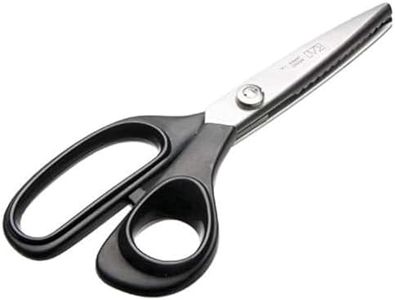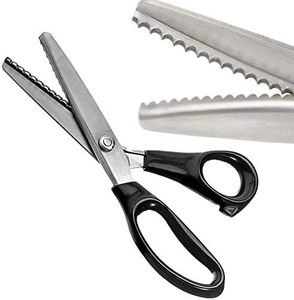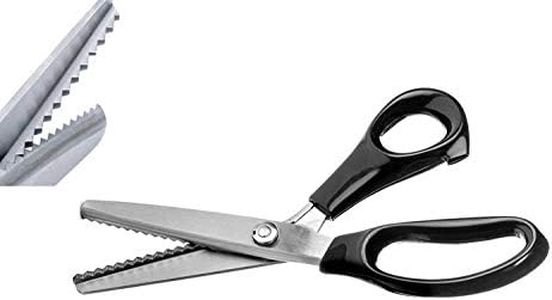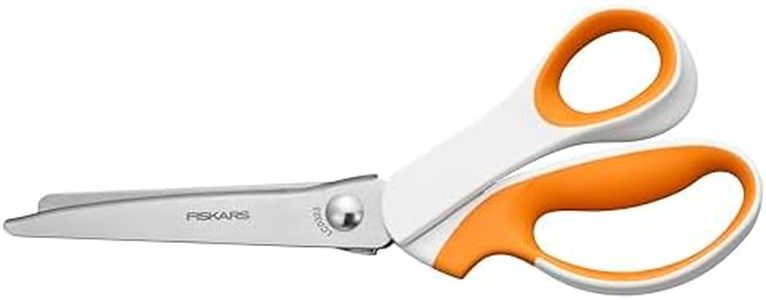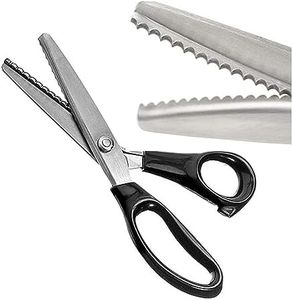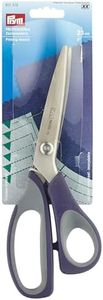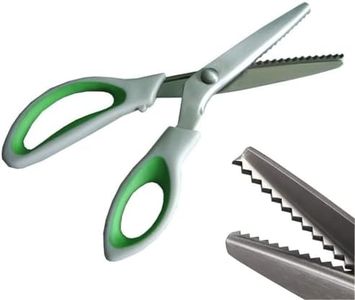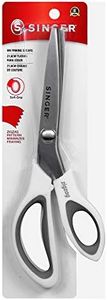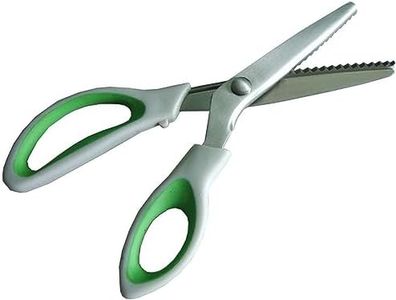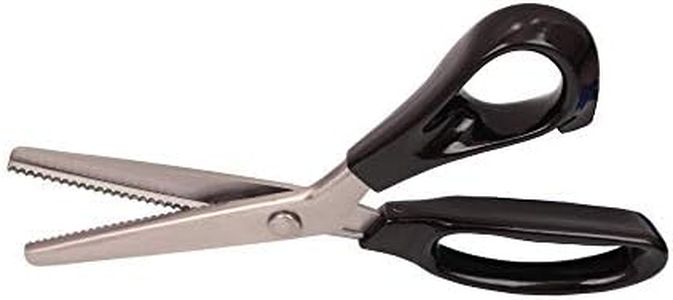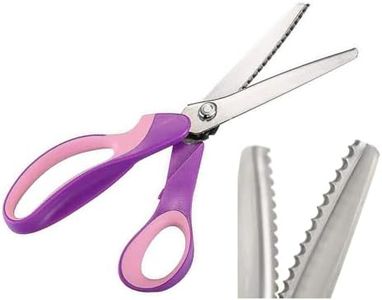We Use CookiesWe use cookies to enhance the security, performance,
functionality and for analytical and promotional activities. By continuing to browse this site you
are agreeing to our privacy policy
10 Best Pinking Shears
From leading brands and best sellers available on the web.Buying Guide for the Best Pinking Shears
Choosing the right pinking shears is an important step for anyone interested in sewing, quilting, or fabric crafts. Pinking shears are special scissors that create a zigzag pattern along the fabric edge, which helps prevent fraying and adds a decorative touch. The right pair makes cutting smoother and your projects neater, so it’s good to consider a few key factors before making your decision. Understanding these main features will help you select shears that are comfortable to use and well-suited to your needs.Blade MaterialThe blade material determines how sharp, durable, and smooth the pinking shears will be. Most commonly, blades are made from stainless steel or carbon steel. Stainless steel blades resist rust and are easy to maintain, making them great for occasional users or those who want low maintenance. Carbon steel blades tend to be sharper and last longer but may require more care to prevent rust. For light, occasional cutting, stainless steel is sufficient, but for heavy or frequent use, carbon steel may offer better long-term sharpness. Think about how often and what types of fabrics you’ll be cutting to decide which blade material is right for you.
Blade SizeBlade size refers to the length of the cutting part of the shears, usually ranging between 7 to 10 inches. Shorter blades (around 7 inches) are easier to control and best for small projects or detailed work. Longer blades (up to 10 inches) can cut more fabric at once, making them ideal for large patterns or straight lines. If you mostly work on small crafts, choose shorter blades, but if you need to cut large fabric sections, go for longer blades.
Handle Comfort and GripHandle comfort is important because using shears for extended periods can tire your hand. Handles can be made from plastic, rubber, or metal, with various shapes and cushioning. Ergonomic handles with padding reduce discomfort and are better for frequent use or for people with arthritis. If your hands are sensitive or if you sew a lot, look for ergonomic or padded handles. For occasional, quick tasks, standard handles might work just fine.
Cut Pattern WidthThe cut pattern width or depth refers to the distance from the tip of one zigzag to the next. Some pinking shears make larger, more dramatic zigzags, while others cut finer, smaller patterns. Wider patterns provide more fray protection but may not suit all decorative needs, while finer patterns look more delicate and are often used for lightweight fabrics. Choose a pattern width based on the look you want and the type of fabric you usually cut.
Shear WeightThe weight of the shears affects how comfortable they are to handle, especially for prolonged use. Heavier shears can feel more sturdy and precise, but may tire your hand quickly. Lighter shears are easier to maneuver and less tiring, but might not cut as smoothly through thick fabric. If you have to do a lot of cutting or have weaker hand strength, opt for lighter shears. For tough, heavy-duty projects, a slightly heavier pair can give better control.
Ease of MaintenancePinking shears need to be kept clean and sharp for the best results. Some designs are easier to maintain, with blades that don’t rust and handles that can be wiped clean. Others may require occasional oiling or even professional sharpening. If you prefer convenience, look for models that are marketed as low-maintenance. If you don’t mind taking care of your tools and want the sharpest edge, you might choose a pair that allows for easy blade sharpening.


